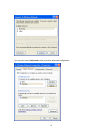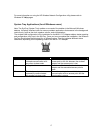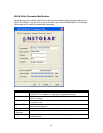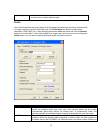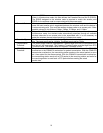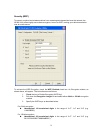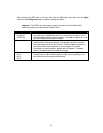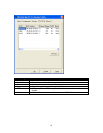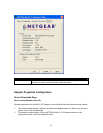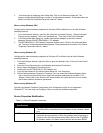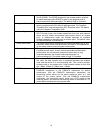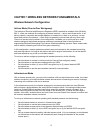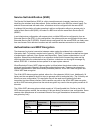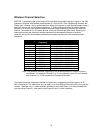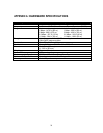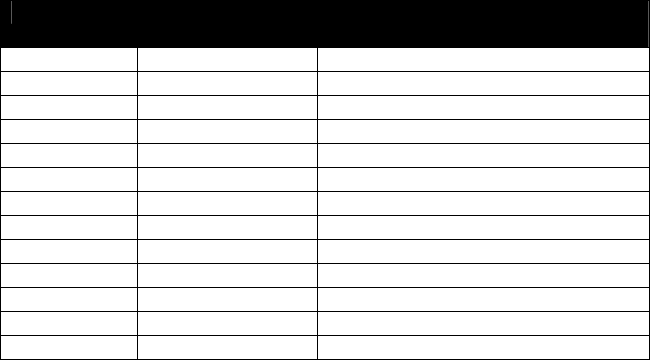
29
Wireless Channel Selection
IEEE 802.11 wireless nodes communicate with each other using radio frequency signals in the ISM
(Industrial, Scientific, and Medical) band between 2.4 GHz and 2.5 GHz. Neighboring channels are
5 MHz apart. However, due to spread spectrum effect of the signals, a node sending signals using a
particular channel will utilize frequency spectrum 12.5 MHz above and below the center channel
frequency. As a result, two separate wireless networks using neighboring channels (for example,
channel 1 and channel 2) in the same general vicinity will interfere with each other. Applying two
channels that allow the maximum channel separation will decrease the amount of channel
crosstalk, and provide a noticeable performance increase over networks with minimal channel
separation.
Channel Center
Frequency
Frequency Spread
1 2412 MHz 2399.5 MHz – 2424.5 MHz
2 2417 MHz 2404.5 MHz – 2429.5 MHz
3 2422 MHz 2409.5 MHz –2434.5 MHz
4 2427 MHz 2414.5 MHz –2439.5 MHz
5 2432 MHz 2419.5 MHz – 2444.5 MHz
6 2437 MHz 2424.5 MHz –2449.5 MHz
7 2442 MHz 2429.5 MHz –2454.5 MHz
8 2447 MHz 2434.5 MHz – 2459.5 MHz
9 2452 MHz 2439.5 MHz –2464.5 MHz
10 2457 MHz 2444.5 MHz –2469.5 MHz
11 2462 MHz 2449.5 MHz – 2474.5 MHz
12 2467 MHz 2454.5 MHz – 2479.5 MHz
13 2472 MHz 2459.5 MHz – 2484.5 MHz
Note: The available channels supported by the wireless products in various countries
are different. For example, Channel 1 to 11 are supported in the U.S. and Canada,
and Channel 1 to 13 are supported in Europe and Australia.
The preferred channel separation between the channels in neighboring wireless networks is 25
MHz (5 channels). This means that you can apply up to three different channels within your wireless
network. There are only 11 usable wireless channels in the United States. It is recommended that
you start using Channel 1, and grow to use Channel 6 and 11 when necessary.



